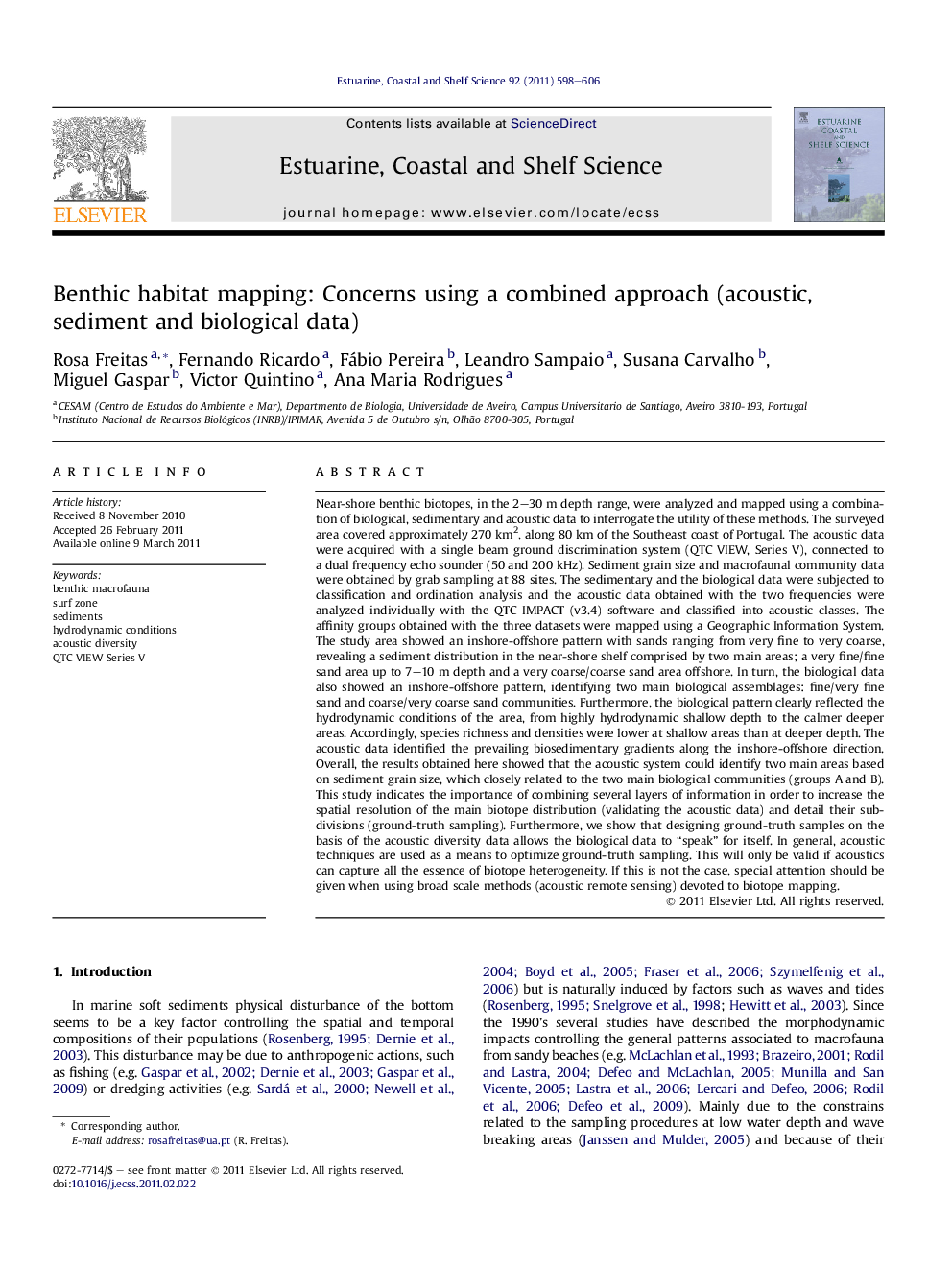| کد مقاله | کد نشریه | سال انتشار | مقاله انگلیسی | نسخه تمام متن |
|---|---|---|---|---|
| 4540489 | 1326672 | 2011 | 9 صفحه PDF | دانلود رایگان |

Near-shore benthic biotopes, in the 2–30 m depth range, were analyzed and mapped using a combination of biological, sedimentary and acoustic data to interrogate the utility of these methods. The surveyed area covered approximately 270 km2, along 80 km of the Southeast coast of Portugal. The acoustic data were acquired with a single beam ground discrimination system (QTC VIEW, Series V), connected to a dual frequency echo sounder (50 and 200 kHz). Sediment grain size and macrofaunal community data were obtained by grab sampling at 88 sites. The sedimentary and the biological data were subjected to classification and ordination analysis and the acoustic data obtained with the two frequencies were analyzed individually with the QTC IMPACT (v3.4) software and classified into acoustic classes. The affinity groups obtained with the three datasets were mapped using a Geographic Information System. The study area showed an inshore-offshore pattern with sands ranging from very fine to very coarse, revealing a sediment distribution in the near-shore shelf comprised by two main areas; a very fine/fine sand area up to 7–10 m depth and a very coarse/coarse sand area offshore. In turn, the biological data also showed an inshore-offshore pattern, identifying two main biological assemblages: fine/very fine sand and coarse/very coarse sand communities. Furthermore, the biological pattern clearly reflected the hydrodynamic conditions of the area, from highly hydrodynamic shallow depth to the calmer deeper areas. Accordingly, species richness and densities were lower at shallow areas than at deeper depth. The acoustic data identified the prevailing biosedimentary gradients along the inshore-offshore direction. Overall, the results obtained here showed that the acoustic system could identify two main areas based on sediment grain size, which closely related to the two main biological communities (groups A and B). This study indicates the importance of combining several layers of information in order to increase the spatial resolution of the main biotope distribution (validating the acoustic data) and detail their sub-divisions (ground-truth sampling). Furthermore, we show that designing ground-truth samples on the basis of the acoustic diversity data allows the biological data to “speak” for itself. In general, acoustic techniques are used as a means to optimize ground-truth sampling. This will only be valid if acoustics can capture all the essence of biotope heterogeneity. If this is not the case, special attention should be given when using broad scale methods (acoustic remote sensing) devoted to biotope mapping.
► The acoustic data identified the prevailing biossedimentary gradients.
► The acoustic system was able to identify two main areas based on sediment grain size.
► This study indicates the importance of combining several layers of information.
► Designing ground-truth samples on the basis of the acoustic diversity data is conditioning.
► Attention should be given when using broad scale methods devoted to biotope mapping.
Journal: Estuarine, Coastal and Shelf Science - Volume 92, Issue 4, 20 May 2011, Pages 598–606